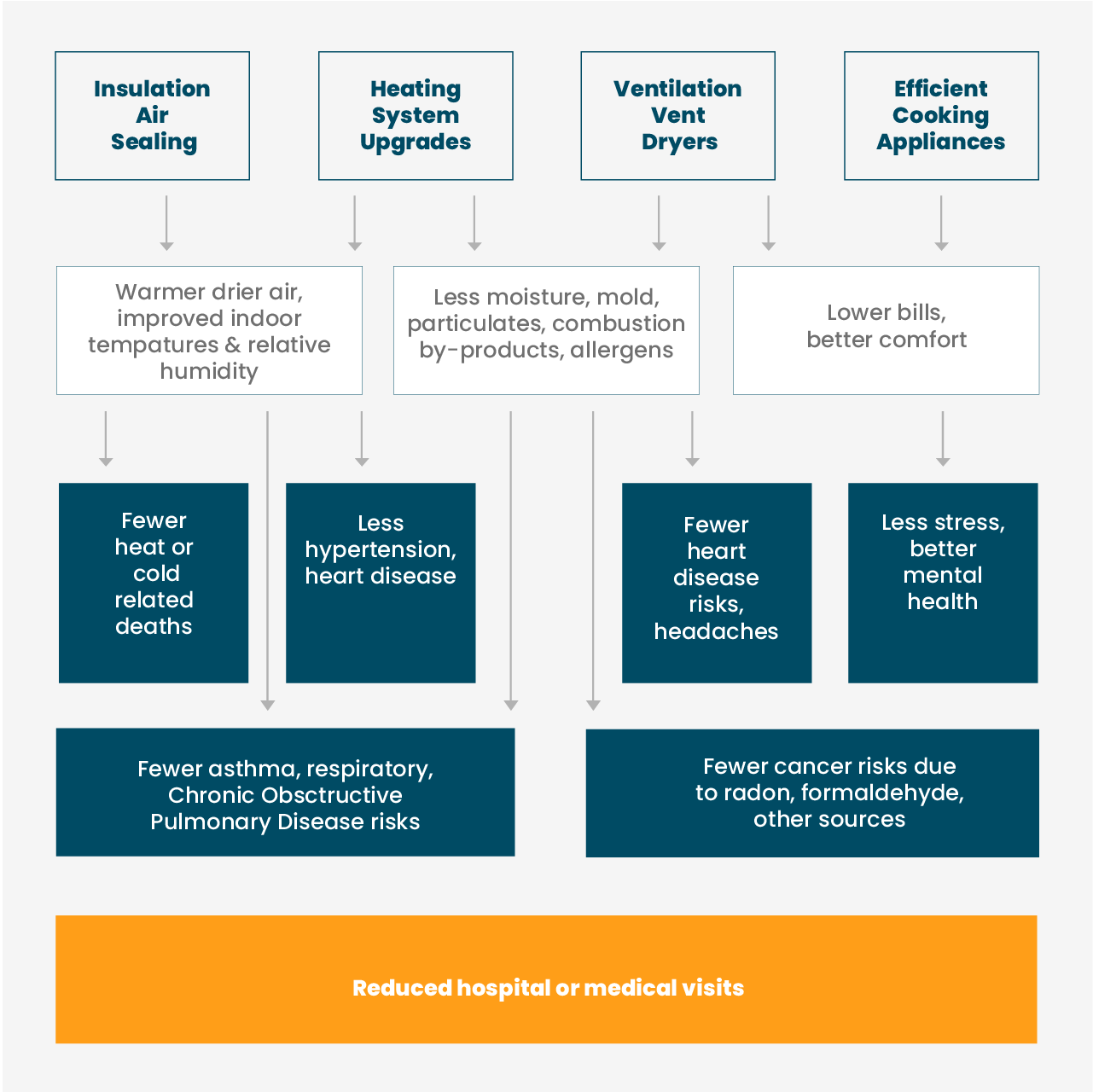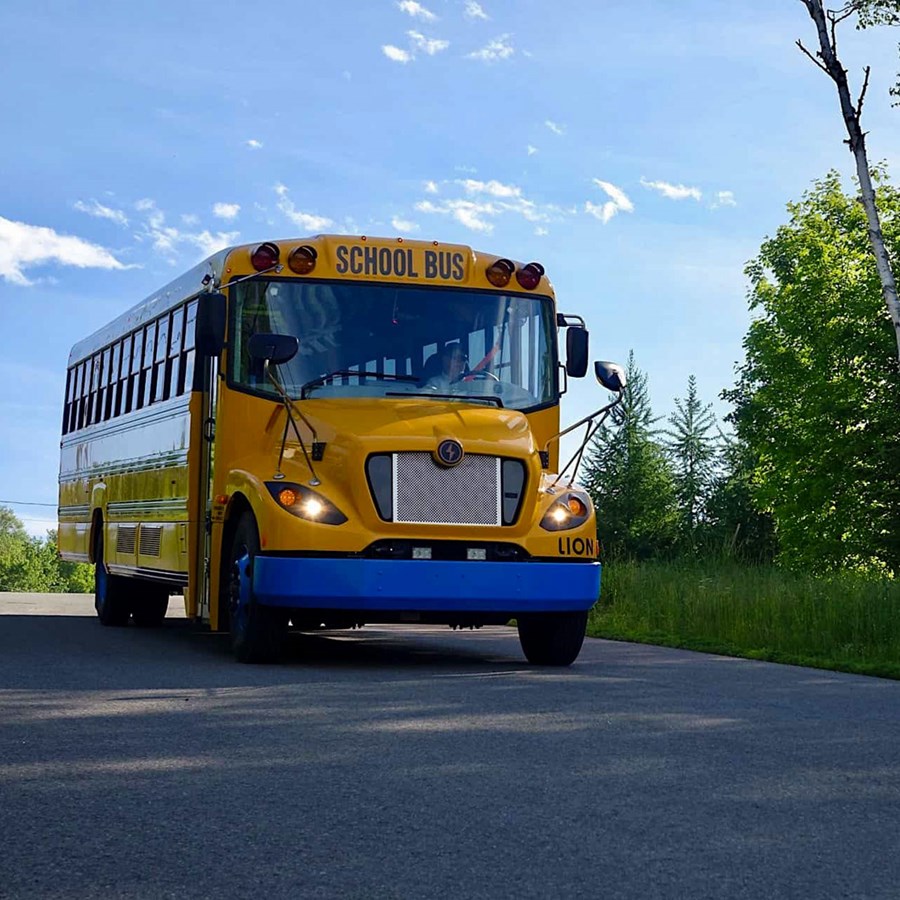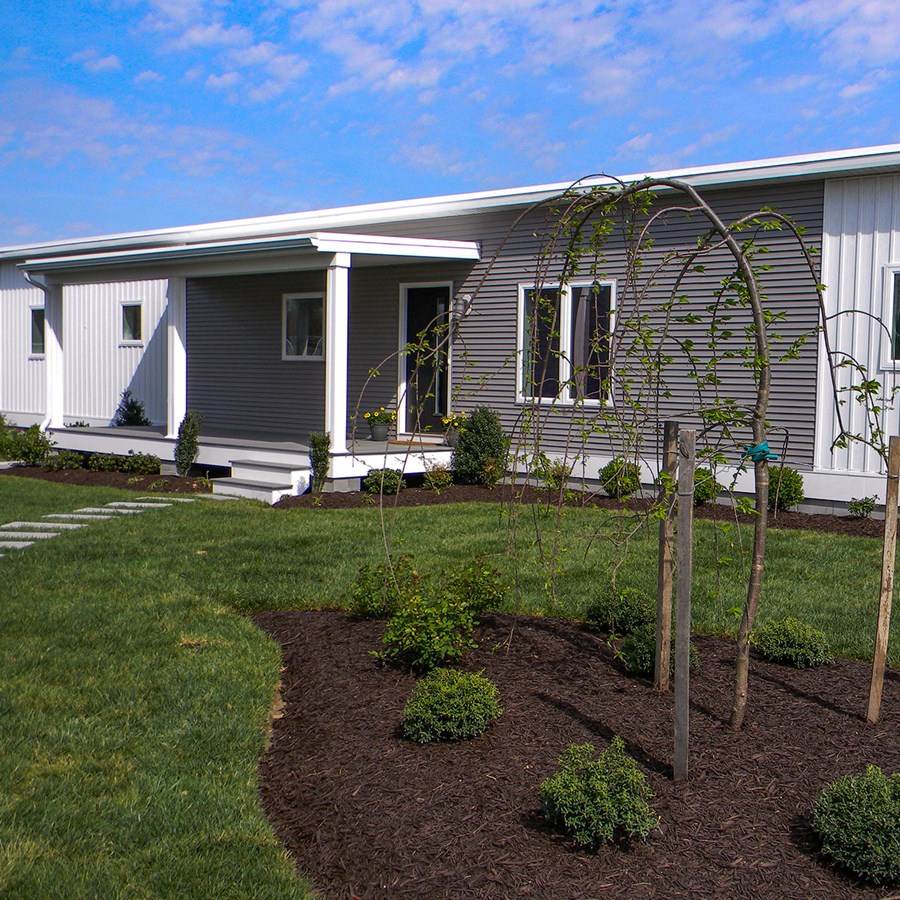What if access to health funding could grow the reach of your energy efficiency program?

The Challenge
The U.S. spends a lot of money on health care, with respiratory illnesses among the highest contributors. Energy efficiency programs can positively impact respiratory health, but efficiency funding for the sectors most in need is constrained, and the path to creating successful energy-plus-health programs is often unclear.
The Solution
As states acknowledge the connection between energy efficiency and health, resources like VEIC’s Energy-Plus-Health Playbook help decisionmakers demonstrate the value of energy-plus-health programs and guide their design and implementation alongside healthcare partners. Services: Energy Efficiency
The Impact
The Energy-Plus-Health Playbook is an open-source tool that’s helping efficiency program administrators build new programs and refine the model for successful and scalable services in the emerging realm of health and energy integration.
Buildings are good for our health
Energy efficiency programs reduce people’s utility bills and limit harmful emissions. But did you know they can also positively impact public health? It turns out, buildings that are inadequately insulated and ventilated tend to have poor indoor air quality. Poor indoor air quality is strongly associated with increased rates of respiratory illness, which is the fourth highest health-care expenditure in the nation.
As the health care system faces increased cost pressure, there’s an increased focus on patients’ living situations and how their physical household conditions affect their health. Meanwhile, energy efficiency programs are in search of new funding streams, particularly for programs in low- to middle-income markets. In other words, there’s a mutual opportunity for the health-care industry and energy efficiency experts to team up, improving our energy and public health landscape at the same time.
Public health funding streams like Medicaid are being adjusted to cover energy assessments in states including Missouri, Maryland, and New York, and health funding for retrofits is also being explored in some markets. Other states aren’t far behind, as Connecticut, Massachusetts, Rhode Island, and Vermont begin to quantify the health benefits of energy efficiency programs. The groundwork for crosscutting energy-plus-health programs is now in place, lowering the barrier of entry for other states.

It's all about air quality
People spend about 69 percent of their time inside a home. Homes with inadequate air sealing, insulation, and ventilation, along with outdated appliances and heating systems, can experience poor air quality from mold, moisture, allergens, and combustion pollutants and other factors. These can trigger asthma attacks and worsen symptoms for people with chronic allergies and respiratory illness.
Energy efficiency audits and retrofits demonstrably improve health outcomes for people with weak respiratory systems, especially children, advancing the Healthy Homes Principles established by the U.S. Department of Housing and Urban Development.
“It really is a great resource. It captures many of the stories I have heard at conferences in the last two years in one place. ”
VEIC wrote the playbook on energy-health synergy
The energy efficiency and health industries share the goal of improving unhealthy, substandard housing situations. VEIC conducted the research and stakeholder outreach to find the best paths for energy-plus-health program integration, systematically coordinating the substantial resources, relationships, and policy frameworks available to both sides.
Efficiency Vermont, an energy efficiency utility operated by VEIC, is conducting an energy-plus-health pilot program in partnership with the Vermont Department of Health, the state’s Weatherization Assistance Program, and local hospitals to raise awareness of the connection between efficiency, indoor air quality, and health.
Drawing on our experience in the emerging realm of health and energy integration, VEIC developed the Energy-Plus-Health Playbook to guide energy efficiency program administrators, in partnership with E4TheFuture, which also funded the work.

The Playbook provides a comprehensive set of program design guidelines, resources, and case studies to program administrators interested in developing or expanding energy-plus-health programs.
Integrated energy-plus-health programs unlock benefits beyond what either sector could accomplish on its own, with wide-ranging prospects for success:
- Wider consumer reach with more extensive services
- Growth in weatherization and residential retrofit programs due to health benefits
- Improved quality of life in low-income households
- Improved health outcomes and reduced health care use and costs
- New health-related funding streams for improved program outcomes
VEIC is seeking the opportunity to support new energy-plus-health pilots and programs, leveraging experience from the ongoing pilot in Vermont and the extensive research behind the Energy-Plus-Health Playbook. The potential to cultivate a positive feedback loop of social, economic, and environmental benefits is truly exciting. As we design and deliver new pilots merging energy and health across different regions and demographics, our model for successful and scalable energy-plus-health integration will continue to be refined, leading to a healthier and cleaner future.



